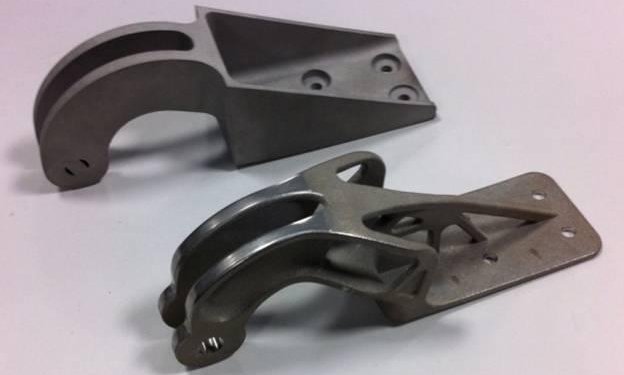Amaze: the European project of 3D printing of metal parts for the aerospace industry

Recently, the European Space Agency announced the start of work on the Amaze project. The goal of this project is to “bring 3D printing to the Iron Age”. In other words, the project participants are going to create a technology for 3D printing of metal parts (and even entire devices). This project is not a small initiative. The participants are already 28 large organizations.
According to the project initiators, the ability to print metal parts for spacecraft will significantly reduce the cost of creating the devices themselves, plus such production will produce a minimum of waste.
')
The project itself is not just a fantasy - after all, some organizations are already printing parts for their metal devices (recall at least NASA ). And the Amaze project has already shown the first results: “printed” parts made of tungsten, which, as is known, can withstand heating up to 3 thousand degrees above zero Celsius.
The parts themselves will be made of metal powder by directional sintering of this powder with a laser beam.

Interestingly, the name of the project, Amaze, is an abbreviated acronym from "Additive Manufacturing High-Tech Metal Products". Among the above 28 participants in the project, you can see such organizations as Airbus, Astrium, Norsk Titanium, Cranfield University, EADS and others. The project budget is 20 million euros.
Production facilities for the project will be located in France, Germany, Italy, Norway, UK. All of these will be complementary industrial facilities that make up the production chain. Now the research team has begun to print parts of jet engines, as well as sections of the wing of the aircraft up to 2 meters in size. These parts are usually made from expensive and rare metals such as titanium, tantalum and vanadium. Waste from normal production is very high, but the printing of this type reduces waste to zero.
Project participants claim that printing parts, rather than melting or something else, will make them more durable, and at the same time, lighter. That is, less material will be used to create parts using this method, which again will save money.

Of course, before the project participants - many problems to be solved. In addition to purely administrative, there are still problems such as the appearance of air bubbles in the parts, as well as the need to treat the surface of the “printed” part. So far, the surface is far from perfectly smooth.
Via bbc.co.uk
Source: https://habr.com/ru/post/197832/
All Articles